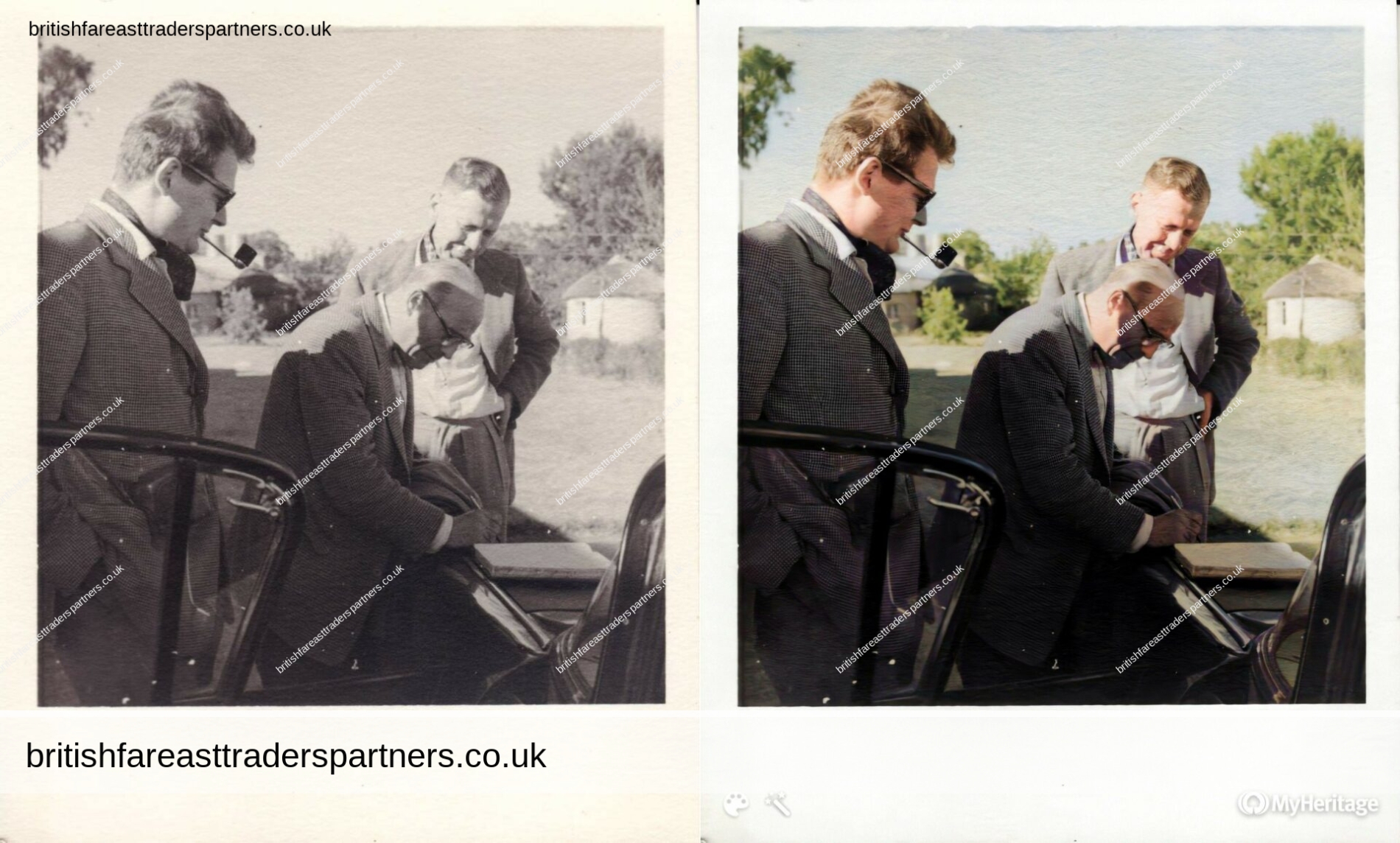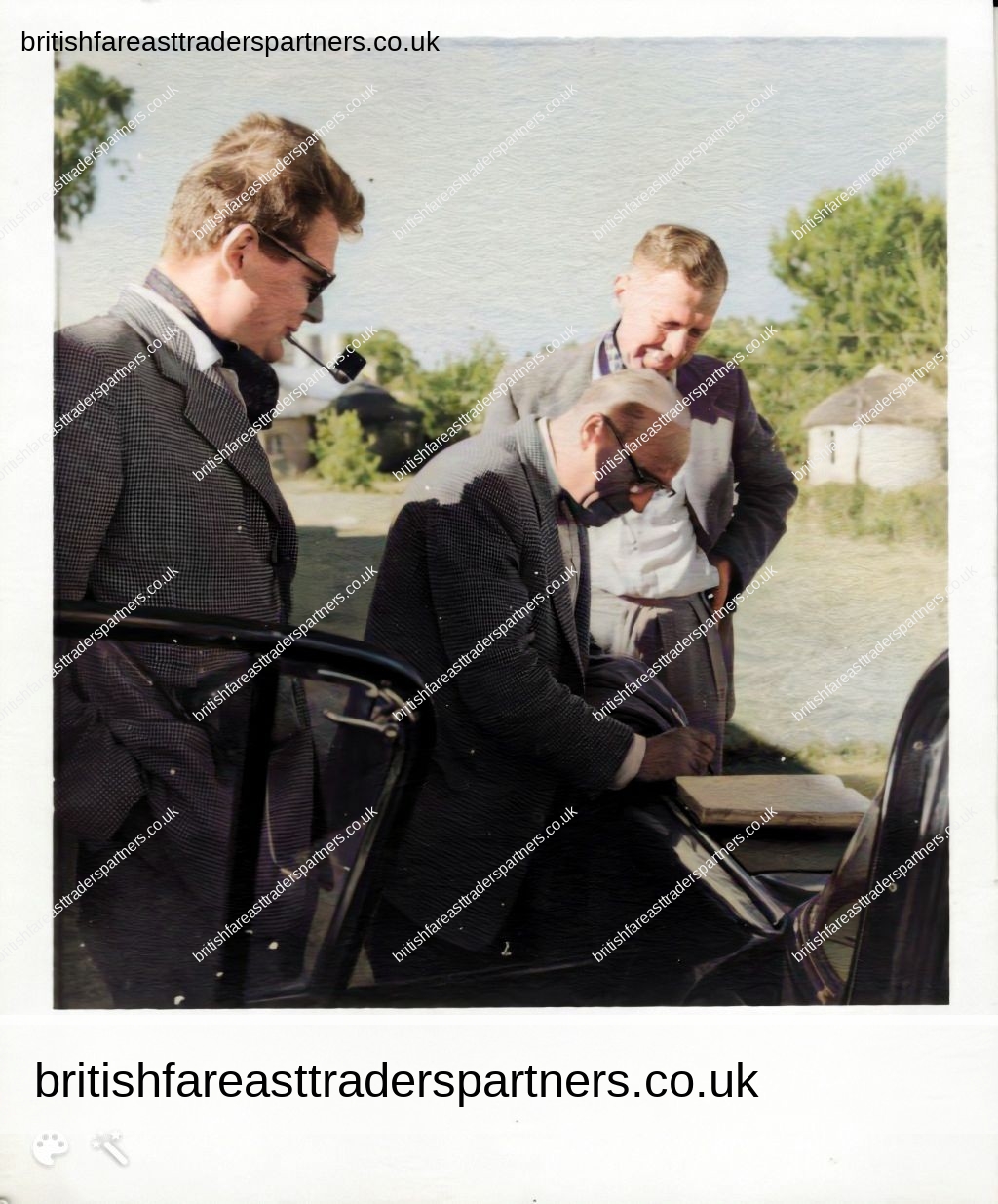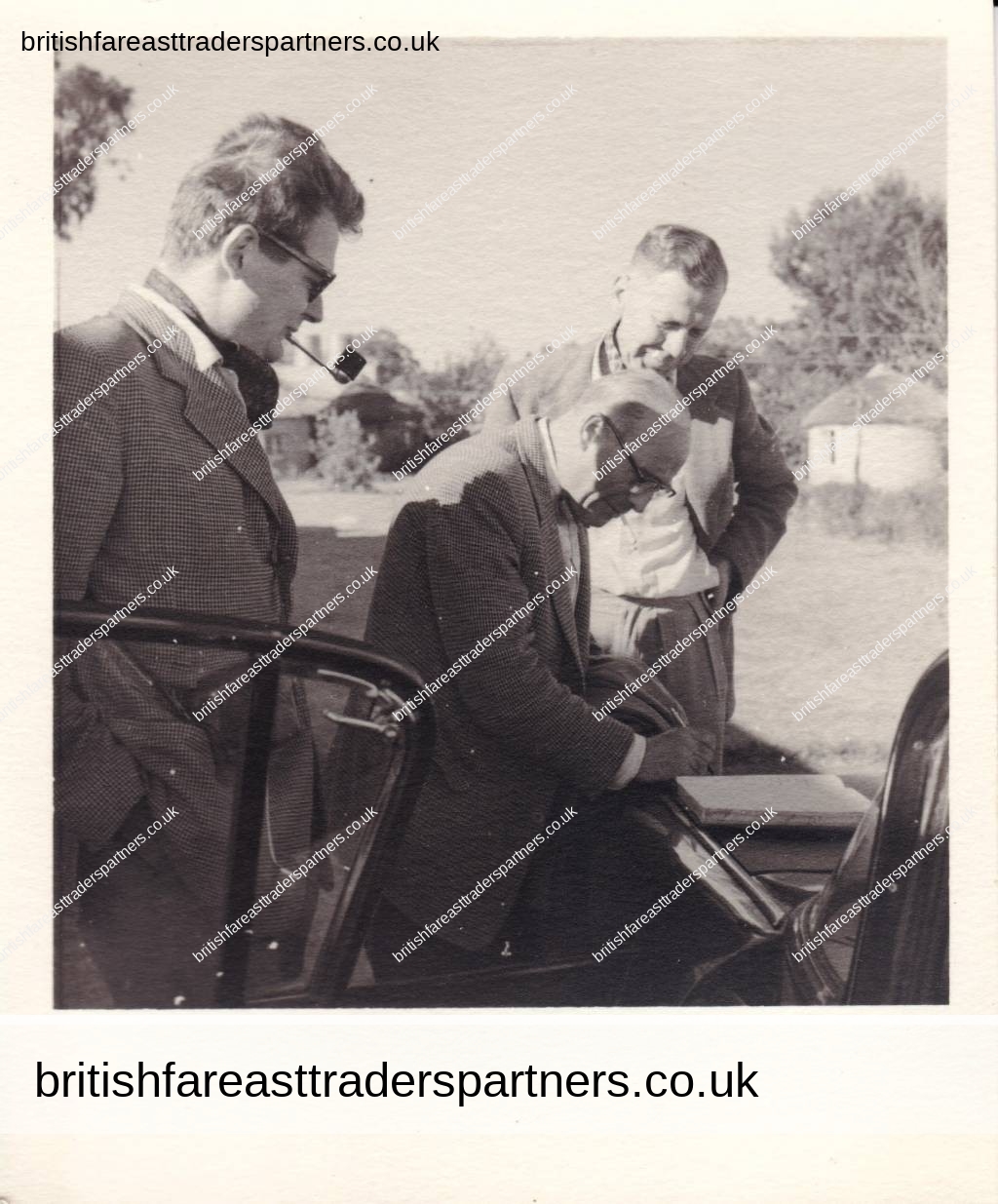Last Updated on: 16th October 2023, 07:13 am

VINTAGE May 1959 3 Fashionable WHITE Gentlemen in Ngutu, SOUTH AFRICA Print PHOTO
- britishfareasttraderspartners_admin
- BRITISH, COLLECTABLES / COLLECTIBLES, CULTURE, EPHEMERA, ETHNOGRAPHIC, EUROPE / EUROPEAN, FASHION, HERITAGE, HISTORY, HOBBIES / PASTIMES, INSPIRE ME, LIFESTYLE, PEOPLE, PHOTOS, POSTCARDS, VINTAGE
- 1959, Afrikaners, Collectables / Collectibles, Dutch, DUTCH EAST INDIA COMPANY, Ethnographic, Europe / European, Fashion, Gentlemen, KwaZulu-Natal (South Africa), Ngutu (South Africa), Photograph, South Africa / South African
VINTAGE May 1959 3 Fashionable WHITE Gentlemen in Ngutu, SOUTH AFRICA Print PHOTO
This vintage photograph from Ngutu (KwaZulu-Natal, South Africa) in May 1959 is a captivating glimpse into the past. The monochromatic hue, combined with the dated attire and the candid moment, paints a nostalgic image of a bygone era.
Starting with the people in the photograph:
Paul Septezski (on the left): Sporting a smartly tailored suit and stylish glasses, Paul appears to be a confident individual. His pipe adds to the aura of sophistication. His last name, Septezski, has Eastern European undertones, which might suggest a heritage from countries such as Poland, Russia, or possibly the Czech Republic.
Jan Septezski (on the right): Jan shares the same surname as Paul, which implies a familial relationship, potentially brothers. The way he’s slightly bent over and looking at something gives the image a candid and spontaneous feel. His hairstyle and attire also evoke a mid-20th-century European influence.
Henry Vogeyaenger (in the middle): Dressed in a lighter suit compared to the Septezskis and appearing to be engrossed in signing a document, Henry stands out. His last name, Vogeyaenger, is a bit harder to place. It might be of Germanic origin, perhaps indicating roots in Germany or Austria.
As for the ethnic heritage of these individuals, it’s challenging to make definitive judgments based solely on last names and appearance. However, Septezski seems to hint at an Eastern European background, while Vogeyaenger suggests a Central European (Germanic) origin.
European Heritage in South Africa (1950s):
During the 1950s, South Africa was home to a significant European-descended population, primarily of British and Dutch origin, known respectively as the English and the Afrikaners. This European presence dated back several centuries, with the Dutch East India Company establishing the first permanent European settlement in Cape Town in 1652.
Afrikaners: Descended from Dutch, French, and German settlers, the Afrikaners constituted a major portion of the European population in South Africa. They spoke Afrikaans, a language developed from Dutch. The Afrikaners held a deep connection to the land, tracing their heritage back to the early Voortrekkers, pioneers who embarked on the Great Trek to establish new settlements in the interior of Southern Africa.
British South Africans: The British influence began intensifying in the 19th century, especially after the discovery of diamonds and gold, which led to the British Empire annexing large parts of the territory. British South Africans often held significant economic and political power, especially in cities like Johannesburg.
Lifestyle & Society: The European-descended population, especially in urban areas, often lived a lifestyle comparable to their contemporaries in Europe. They built churches, schools, and other institutions that reflected their cultural heritage. Socially, they often lived in separate neighborhoods from the indigenous African populations and held most of the political and economic power due to the policies of racial segregation.
1950s South Africa: This decade was a crucial period in South African history. The National Party, which represented the interests of Afrikaners, implemented apartheid – a rigid system of racial segregation and discrimination against non-white populations. The European-descended population, especially the Afrikaners, played a dominant role in the political and economic life of the country. They held a majority of the administrative, military, and business positions.
Integration and Tension: While many Europeans had integrated well and viewed South Africa as their home, there were also tensions. Some felt a connection to their European roots, while others felt wholly African. The 1950s also saw rising opposition to apartheid, not just from the marginalised black, coloured, and Indian populations, but also from some liberal-minded individuals within the European community who opposed the oppressive policies.
In the context of the photograph, it’s fascinating to think about the lives of Paul Septezski, Jan Septezski, and Henry Vogeyaenger. As individuals of European heritage in the 1950s, they would have navigated a complex socio-political landscape, balancing their own cultural identity with the broader African context they found themselves in. The 1950s was a time of significant change.
Related posts:
- DAYS OUT IN UNITED KINGDOM: PLACES OF INTEREST in WEST SUSSEX, ENGLAND: A SERIES OF PHOTOGRAPHIC BLOG: ARUNDEL CASTLE GROUNDS & ARUNDEL CASTLE WATER GARDEN : A WORLD HERITAGE SITE : HERITAGE | ART | HISTORY | TOPOGRAPHY | TOURISM | TRAVEL | ARCHITECTURE | ARISTOCRACY | CULTURE SHOP OUR ONLINE STORE… Click Here SHOP OUR EBAY:...
- VINTAGE 1959 “STOKING THE FIRE IN A BASUTO KRAAL” SOUTH AFRICA POSTCARD VINTAGE 1959 SOUTH AFRICA POSTCARD "STOKING THE FIRE IN A...
- TREE OF LIFE 925 SILVER JEWELLERY MOTHER OF PEARL | ABALONE | CORAL EFFECT MADE IN INDONESIA FASHION COSTUME JEWELLERY SHOP OUR EBAY: BritishFarEastTradersLifestyle Click Here TREE OF...
- VINTAGE “LIFE GUARDSMAN ON DUTY AT WHITEHALL, LONDON” RPPC POSTCARD VINTAGE REAL PHOTO POSTCARD (RPPC) "LIFE GUARDSMAN ON DUTY AT...
- VINTAGE 1953 CORONATION QUEEN ELIZABETH II NEW ZEALAND STAMP AIR MAIL COVER VINTAGE CORONATION 1953 NEW ZEALAND STAMP ON AIR MAIL ENVELOPE...
- VINTAGE 1991 MAPS (HAMSTREET 1989) ROYAL MAIL STAMP CARD SERIES POSTCARD Vintage maps are a fascinating window into the past, and...
- EXPLORE COSMOPOLITAN BARCELONA IN CATALONIA SPAIN: HOME TO THE FOOTBALL POWERHOUSE FC BARCELONA AND UNESCO WORLD HERITAGE SITES EXPLORE COSMOPOLITAN BARCELONA IN CATALONIA SPAIN: HOME TO THE...
- VINTAGE 1950 “ACF- BRILL MOTORS COMPANY” STOCK SHARE CERTIFICATE VINTAGE STOCK / SHARE CERTIFICATE "ACF-BRILL MOTORS COMPANY" COLLECTABLE DOCUMENTS...
- VINTAGE 1959 “BANTU LIFE : SWAZI MUSICIAN” SOUTH AFRICA POSTCARD VINTAGE 1959 SOUTH AFRICA POSTCARD "BANTU LIFE : SWAZI MUSICIAN"...
- VINTAGE ‘WOMAN PEELING APPLES’ Pieter de Hooch PULMAN & SONS LONDON POSTCARD Looking for a vintage postcard that captures a slice of...


